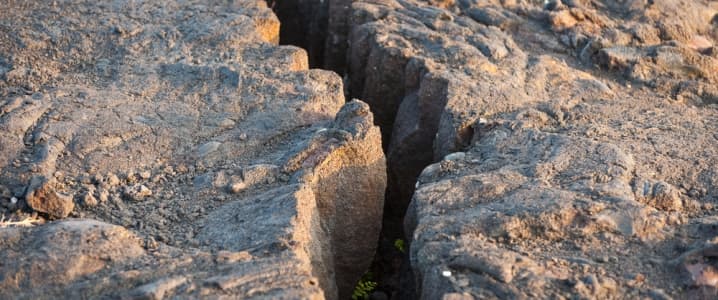A 5.6-magnitude earthquake shook Oklahoma this past weekend, enough to rank it as among one of the state’s most powerful on record. The earthquake, which took place just northwest of Tulsa on September 3, could shake more than just houses and buildings in the region – the latest tremor could upend one of Oklahoma’s most important industries.
Oklahoma is not traditionally known as one of the country’s most seismically active areas, but the frequency of earthquakes has skyrocketed in recent years. Last year, Oklahoma recorded 2,500 earthquakes with a magnitude of 2.5 or greater. That is up dramatically from just three quakes of that size recorded in 2005.
Seismologists are increasingly convinced that the culprit is the wastewater wells used in hydraulic fracturing. When oil and gas drillers frack a well, the wastewater that is left over is injected into disposal wells at high pressure. That is thought to contribute to the slipping of fault lines, increasing the likelihood of an earthquake.
The U.S. Geological Survey said that it would look into the specifics of the latest earthquake, but most believe that disposal wells could be singled out. “Without studying the specifics of the wastewater injection and oil and gas production in this area, the USGS cannot currently conclude whether or not this particular earthquake was caused by industrial-related, human activities,” the USGS said in a statement. “However, we do know that many earthquakes in Oklahoma have been triggered by wastewater fluid injection.”

The increase in the frequency of earthquakes has climbed in corresponding fashion with the rise of fracking in the state. For years, state regulators were reluctant to get involved, convinced by industry captains that they were doing all that they could to minimize the side effects of drilling. After all, oil and gas production has been a cornerstone of the Oklahoma economy for a long time. Related: How Uncertainty In Uzbekistan Threatens China’s Energy Security
But the tremors became too difficult to ignore and the state has slowly begun to put restrictions on industry players, with tougher oversight always coming shortly after the state is rocked by another quake. There are some 35,000 disposal wells in the state, according to Bloomberg, and state regulators have been putting restrictions on operators for more than a year. But the record-tying quake from a few days ago could spark a tighter crack down on disposal wells, which could slow the pace of drilling in Oklahoma.
Oklahoma’s Governor Mary Fallin, a Republican, declared a state of emergency after the latest incident. Regulators ordered drillers controlling 37 disposal wells to immediately shut down after Saturday’s earthquake. It was the first time that the state issued a mandatory order and the industry is watching closely to see if broader action is forthcoming.
“They are going to push the industry to come up with some permanent solutions,” said Michael Lynch, president of Strategic Energy & Economic Research Inc., in an interview with Bloomberg. “It’s hard to believe Oklahoma would move to ban fracking, but I can see where they would say to people that they have to do something else with the wastewater, which is believed to be the source of the increase in earthquakes.” Related: Transportation Sector Under Threat From Amazon
The Oklahoma Independent Petroleum Association told The Wall Street Journal that the state’s response could have a negative impact on oil and gas production. But so far the crackdown on drillers in the vicinity of the earthquake will not necessarily affect the more prolific oil and gas plays in the state, such as the SCOOP and STACK. The only publicly-traded company affected by the state’s mandatory shutdown was PetroQuest Energy Inc. The more well-known drillers in Oklahoma, such as Continental Resources and Devon Energy, likely won’t be impacted at the moment.
“You might see a little bit of a pause” in drilling following the state’s response, Michael Lynch told Bloomberg. “The first step will be restricting the wastewater wells, particularly the ones that seem to be causing the most harm.”
By Nick Cunningham of Oilprice.com
More Top Reads From Oilprice.com:
- Major Oil Indicator Reaches Lowest Level Ever Recorded
- Is Putin’s Support For An OPEC Freeze A Game Changer?
- Limited Spare Capacity Could Lead To An Oil Price Spike


















As to the regulatory structure, I've never worked in Oklahoma, so I'm not sure about their specific downhole injection permitting. However, the disposal of oil & gas..."produced water" is regulated by the Clean Water Act. Most states adhere to an Underground Injection Control (UIC) program that they administer under these federal guidelines. Some states have primacy and implement their own programs which often have more stringent regulations while others follow EPA rules. In any event, this is far from a "lightly" regulated endeavor. LOTS of requirements. I'd just suggest everyone "hold their fire" until the USGS & Oklahoma authorities get all the facts weighed in and reach educated conclusions...